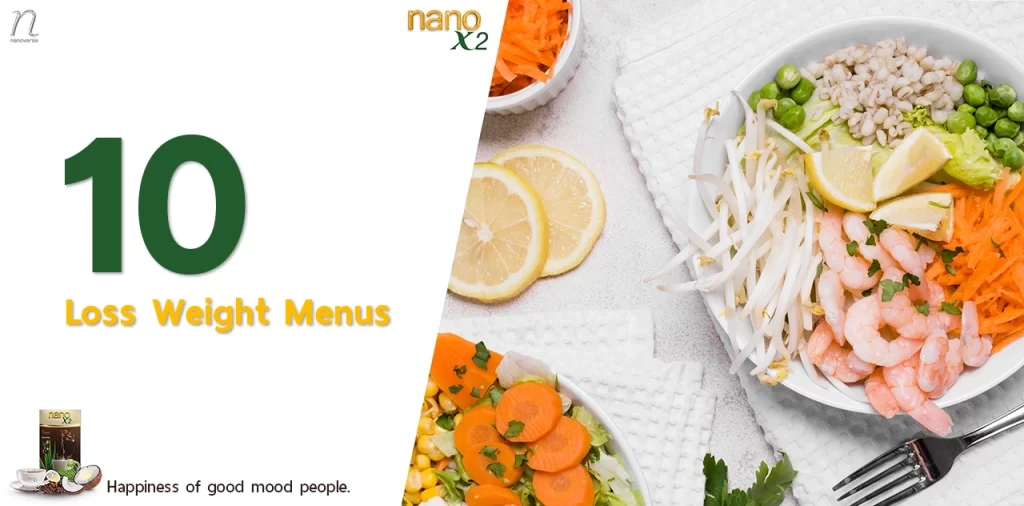
Losing weight seems easy but changing behaviors is not as simple as it appears. Having eating discipline needs to become a habit for good weight loss results and the ability to maintain weight long term. Therefore, having weight loss principles and choosing the right foods is something to be aware of.
10 Weight Loss Menus

10 Weight Loss Menus” Adjust Eating Behaviors for Obesity, What is it?
Obesity is when the body accumulates more fat than normal or more than the body can burn off, storing excess energy as fat in various organs. This risks health issues and can cause various chronic diseases.
7 Eating Behaviors That Unknowingly Cause Weight Gain
1. Eating too fast makes us not chew rice thoroughly so our stomachs don’t realize we’re full. This makes us feel like we’re not full so we eat more food than normal. For the best method, eat slowly, chewing thoroughly.
2. Snacking on desserts and sweets which are mostly made from flour can be a major cause of weight gain. Some people must have something sweet after a savory meal to cleanse the palate. Sweets are indeed sweet so eating them occasionally may not be an issue but having them at the end of every meal will certainly cause weight gain. It would be better to replace sweets with fruit to cleanse the palate.
3. Skipping meals seems like it would make us thinner but the truth is it makes us fatter because skipping a meal makes us crave food more at the next meal. When our bodies finally eat, it stores even more food than before. If you want to lose weight, you must eat all meals but control appropriate food portions.
4. Eating while watching TV or using mobile phones is an unnoticed cause of obesity. We may think they are unrelated but eating and snacking while watching TV or phones makes us oblivious, causing us to continually eat without feeling full. Lying down watching TV also means our bodies aren’t burning calories while inactive yet eating. If you want something to eat while watching or using phones, switch sweets and sodas for fruit and plain water instead.
5. Social drinking may be self reward or stress relief but alcohol itself is unhealthy for the body. Combined with soda, both calorie and sugar content increase, easily causing weight gain. Try shifting social gatherings from alcohol consumption to giving gifts, traveling, or activities unrelated to these unhealthy drinks.
6. Stress eating causes some people to unknowingly eat more when stressed, even making this a stress relief habit. Find other ways to relieve stress such as exercising, walking, or talking to someone to express emotions rather than emotional eating.
7. Overeating after exercising stems from the mistaken belief that after an intense workout, we can eat a lot and burn it off tomorrow. The truth is you should eat appropriate portions and if you want to lose weight, you have to exercise more calories than you consume. If you don’t burn more calories than you eat, you won’t see weight loss results.
Weight Loss Food Secret Formulas
Limiting food energy intake to no more than 800 calories/day can quickly reduce obesity by 10 – 15% of original weight in 3 months but this weight loss method may cause nutritional deficiency. Vitamin and mineral supplementation should be considered so consult a nutritional professional. After stopping calorie restriction, weight can spike back up quicker than slow gradual weight loss. Therefore, consider reducing normal daily calorie intake by 500-750 calories per week, about 200-250 calories per meal, leading to 0.5-1 kg of weight loss per week.
For example, a normal lunch may include 2 bowls of rice, 2 apples, 8 spoonfuls of fried fish, and 1 bowl of stir fried vegetables, totaling 580 calories. Reducing from 2 apples to 1 apple and switching fried fish to steamed fish dishes like steamed fish with lime or clear soup fish stew reduces calorie intake to 358 calories for that meal. For normal daily meals, consuming one meal may result in over 300-700 kilocalories. To determine precise caloric intake from food, meal replacement products can be selected or consult a dietary planner to develop suitable personalized meal plans.
10 Low Calorie Weight Loss Menus
1. 200g clear soup noodles with minced pork, 140 Kcal. Choose very clear soup, low fat minced pork, lots of vegetables, and light seasoning. Noodles should be less than half of the vegetables or can omit noodles entirely.
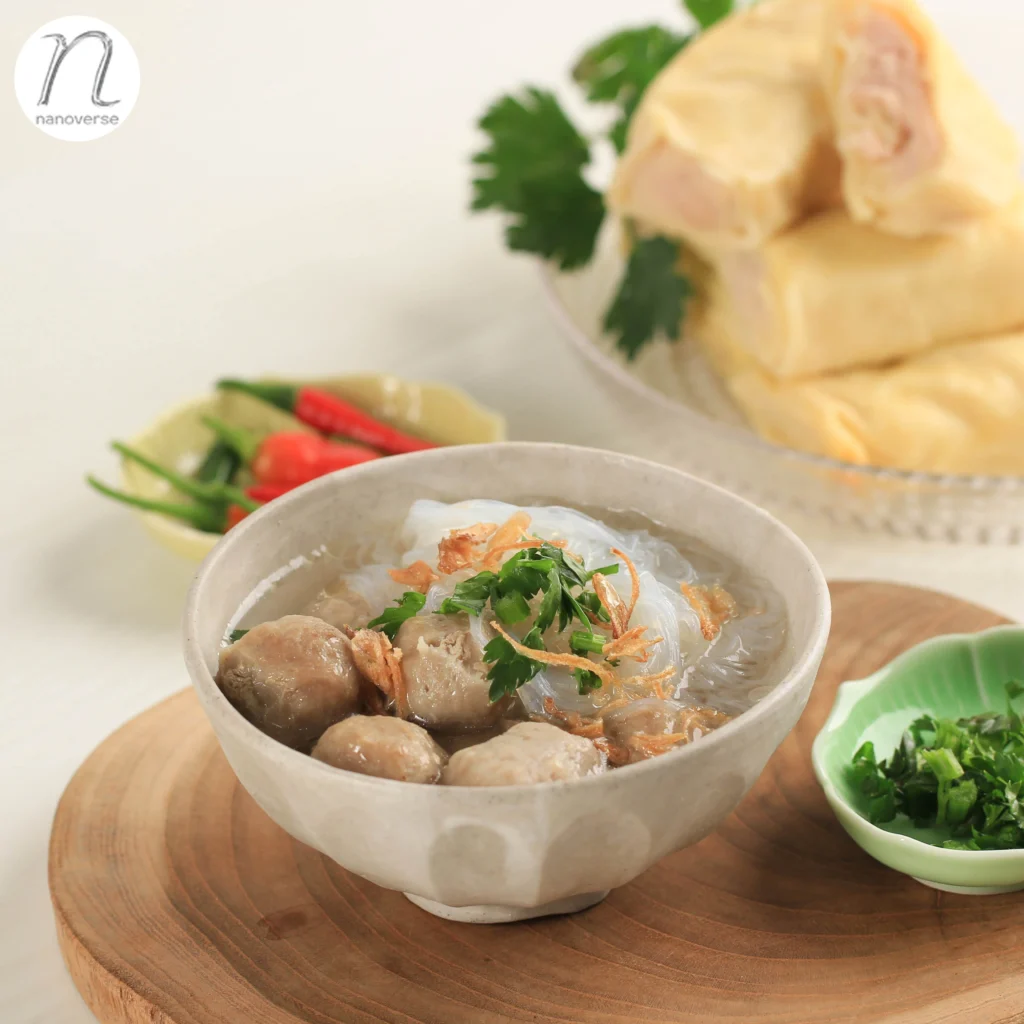
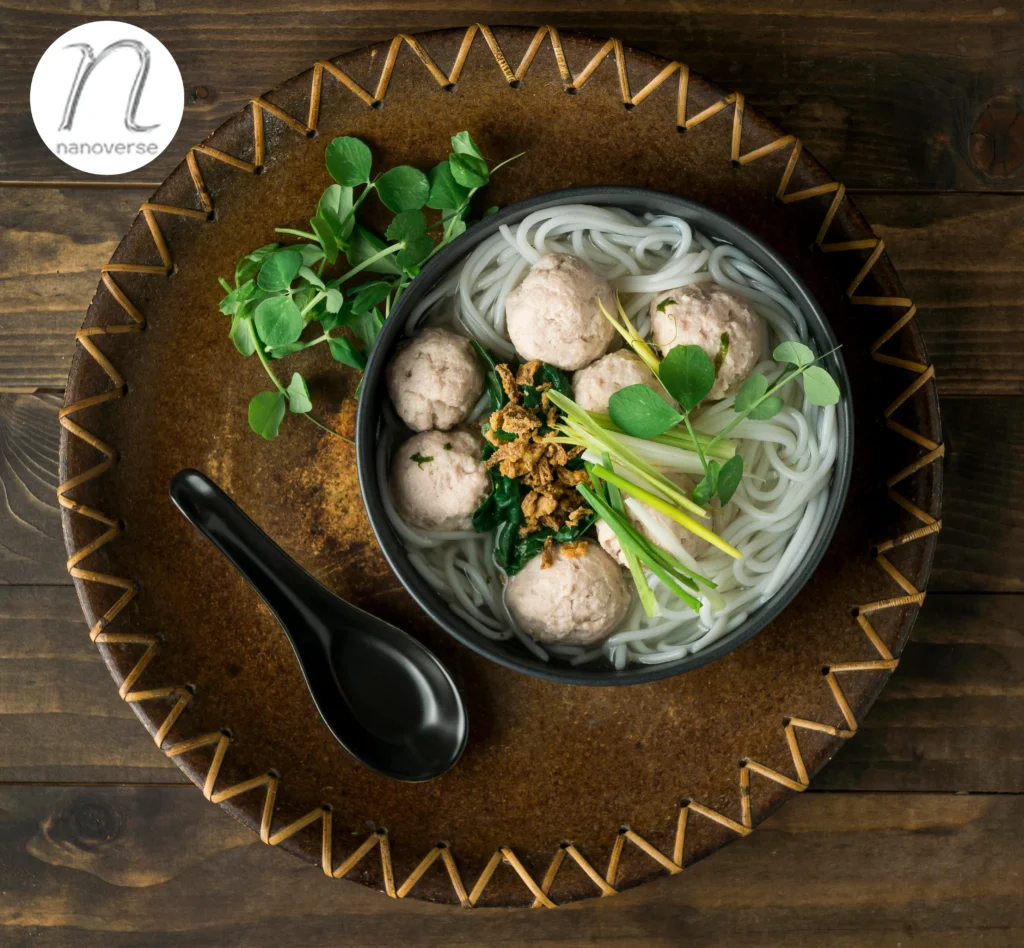
2. 200g sour vegetable soup with fish, 100 Kcal + 80 Kcal brown rice = 180 Kcal. A very delicious low calorie set with spicy sour soup and fish served with brown rice.
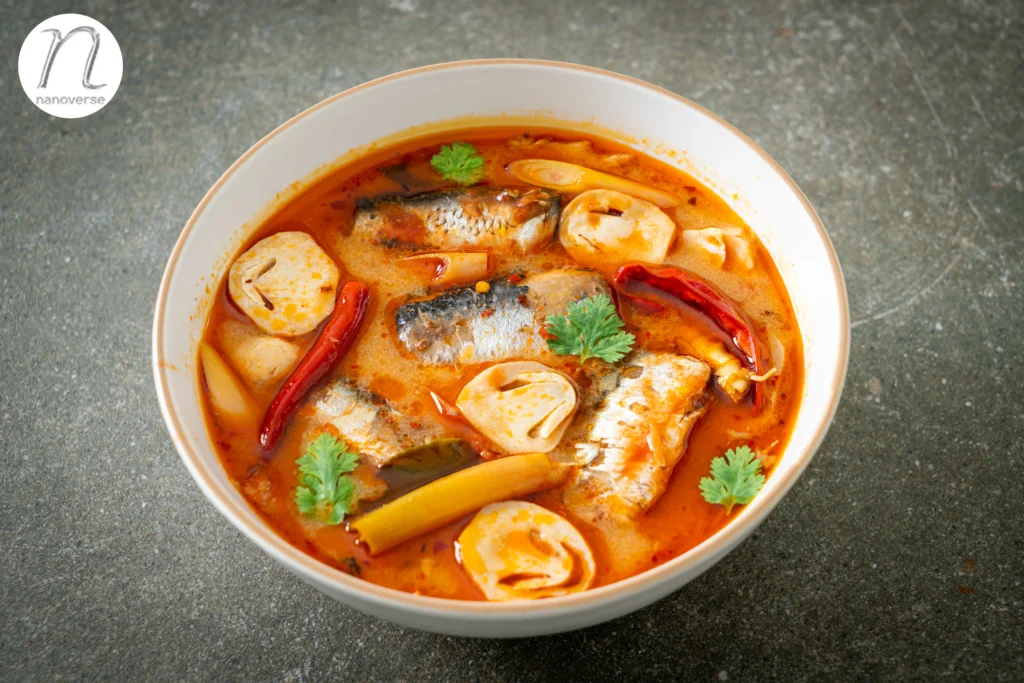
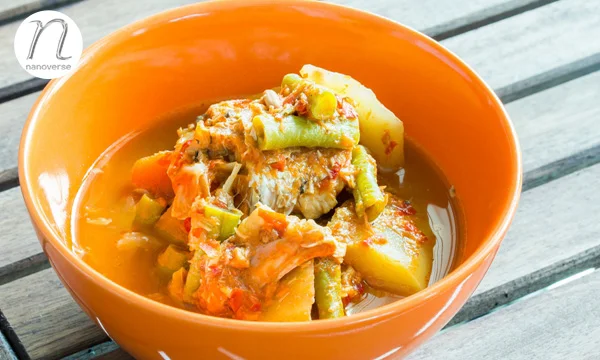
3. 200g clear vegetable and tofu soup with egg and ground pork, 110 Kcal + 80 Kcal brown rice = 190 Kcal. A tasty, mild dish for those who don’t eat spicy foods. Adding seaweed increases flavor. Omitting vermicelli noodles helps avoid an overly stuffed feeling while also keeping calories low.
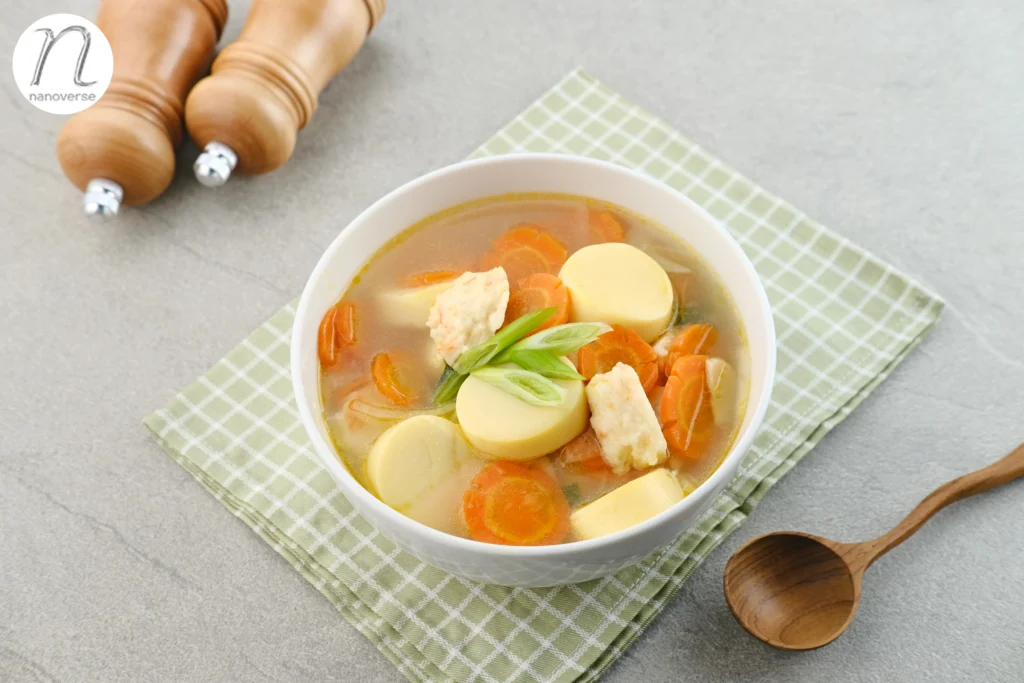
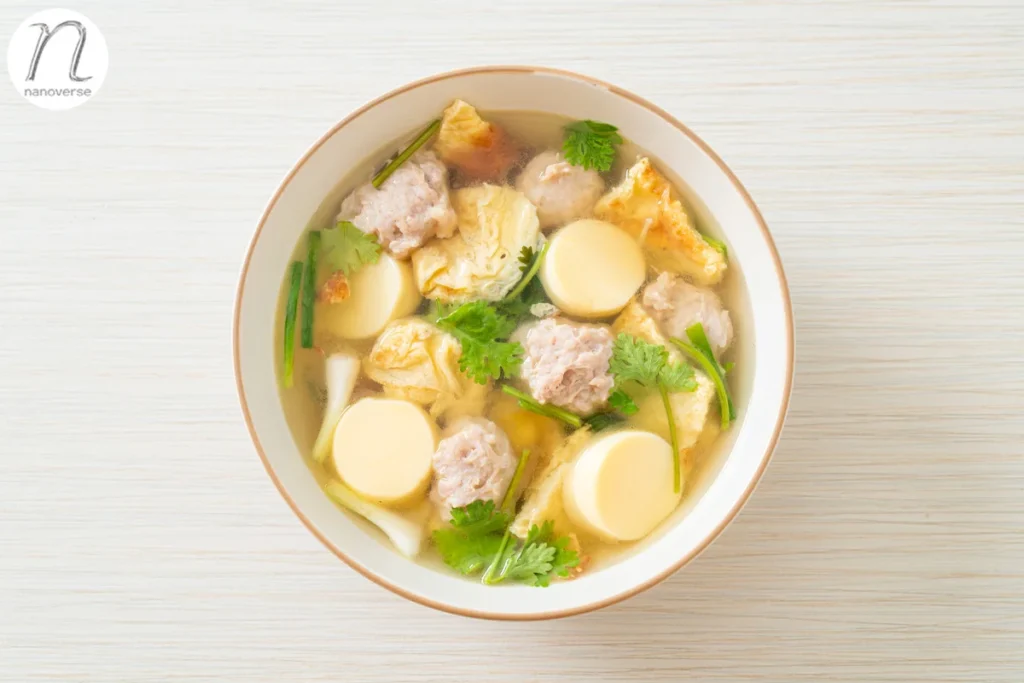
4. 200g pork congee/rice soup, 160 Kcal. Congee or rice soup doesn’t have to be just a breakfast meal, it’s also delicious and comforting for dinner. However, dinner congee is best without eggs which would add another 75 Kcal. Chopped chives, green onions, carrots, broccoli, or any preferred vegetables can be added when making your own congee.
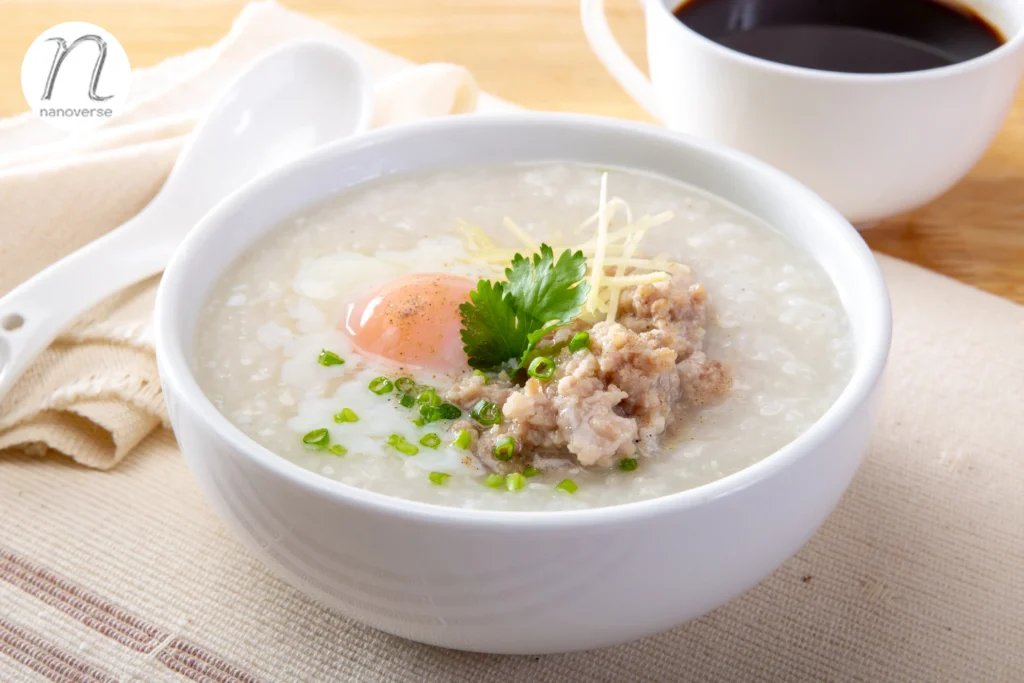
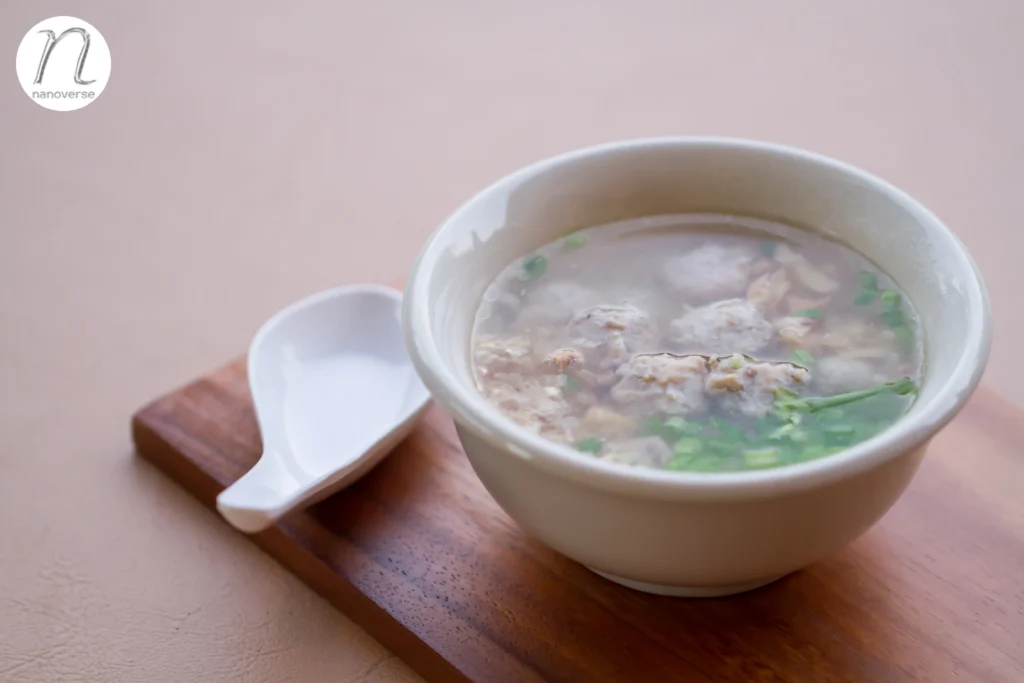
5. 200g glass noodle papaya salad with ground pork, 120 Kcal. A popular dish for women as papaya salad is tangy, tart, and glass noodles absorb the dressing well but don’t overdo noodles. 100g of glass noodles is already 337 Kcal so garnish with just 10-30g or 30-90 Kcal.
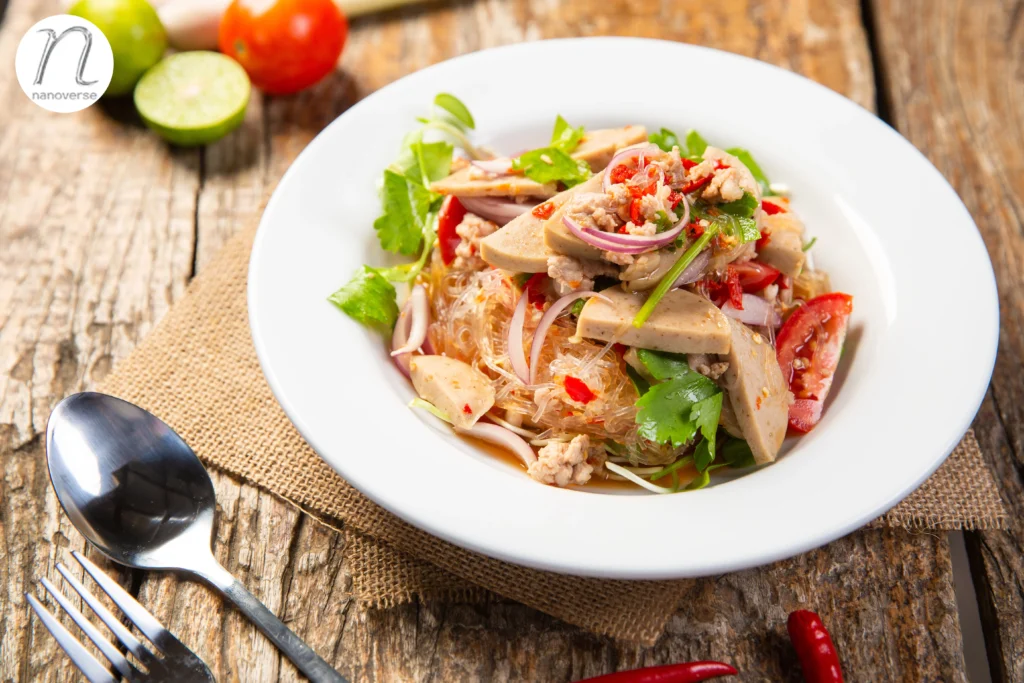
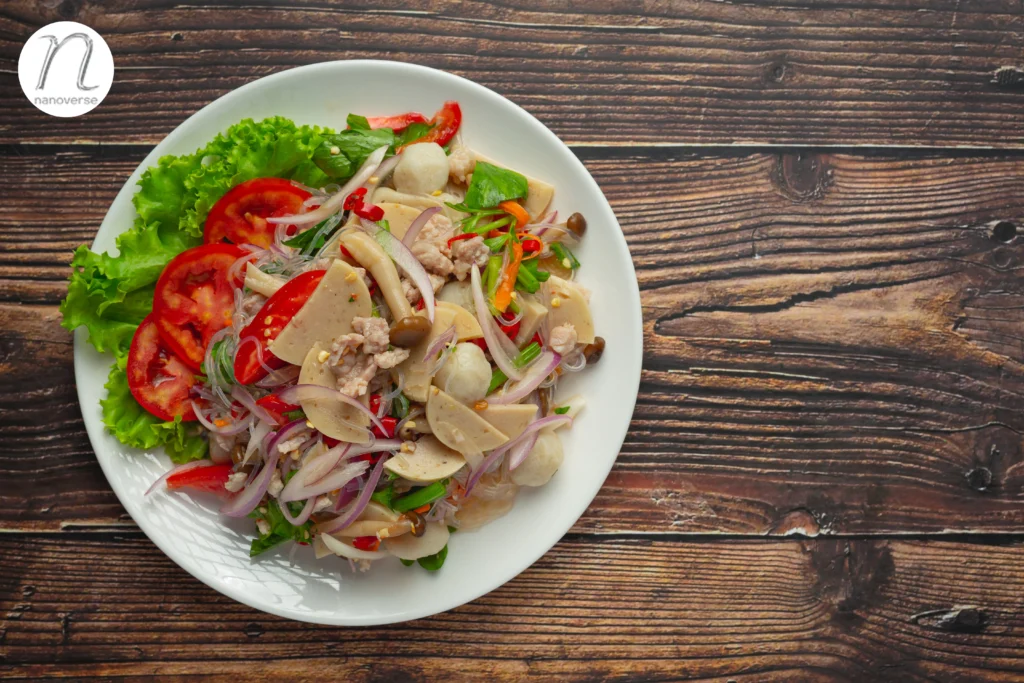
ยำวุ้นเส้นหมูสับ 200 กรัม 120 Kcal
6. boiled egg, 75 Kcal + 80 Kcal brown rice = 155 Kcal. For those who don’t like dishes that are difficult to digest, try easy and delicious boiled eggs. Plus with low calories, there is room to top eggs with extras like ground pork, crab sticks, fish, mushrooms or even Japanese-style egg toppings.
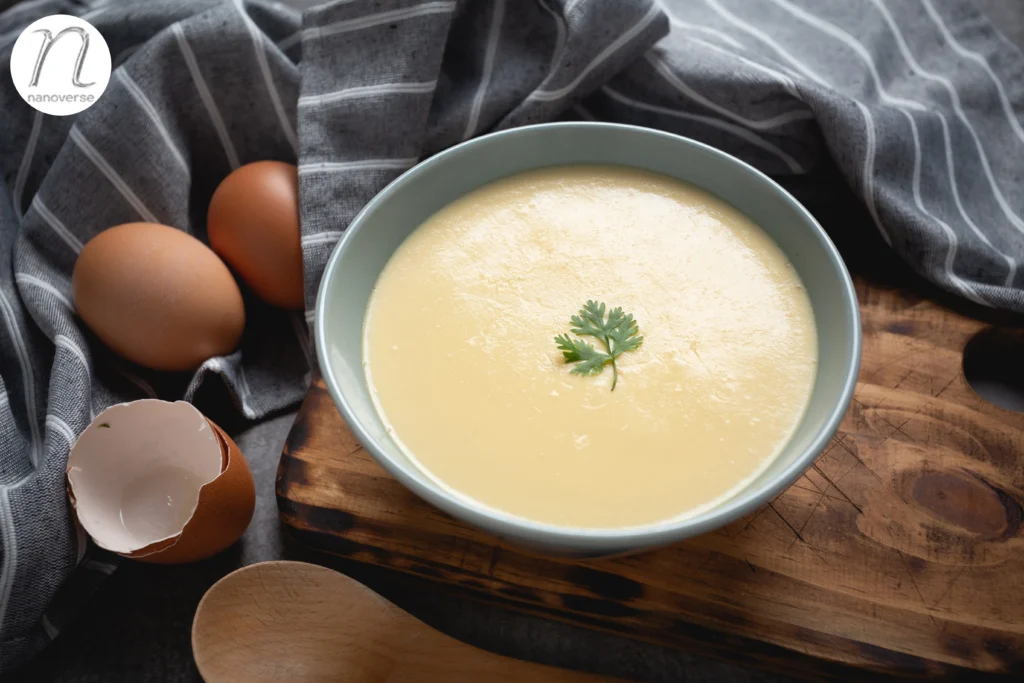
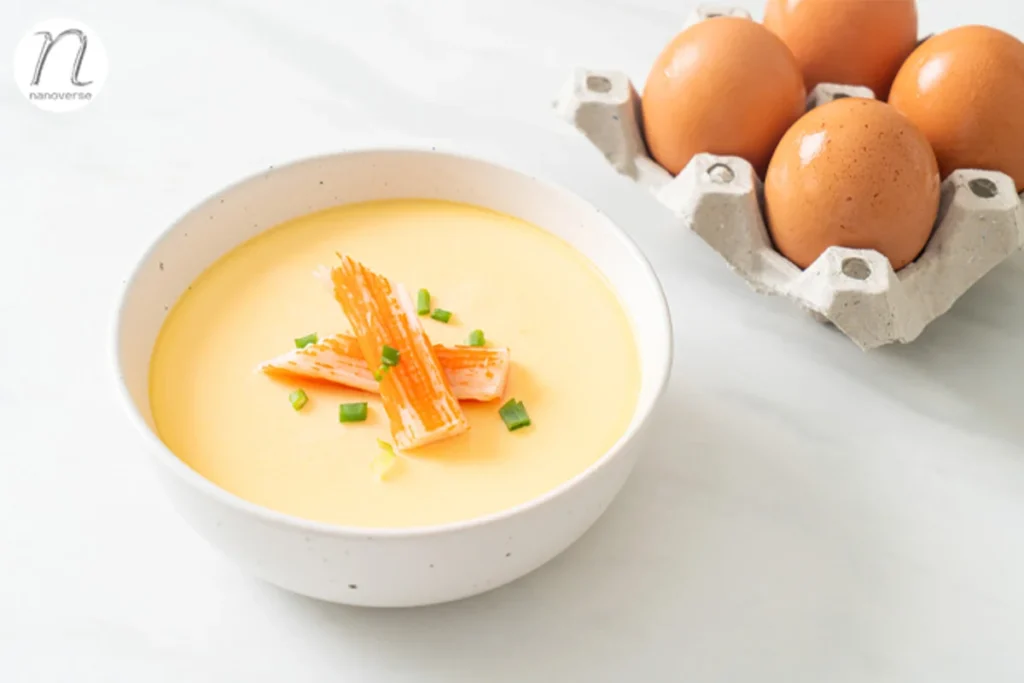
7. small portion fresh vegetable dipping sauce, 55 Kcal + 38 Kcal 1/2 boiled egg + 80 Kcal brown rice = 173 Kcal. A full set of dipping sauce, fresh vegetables, boiled egg, and rice. Apart from an authentic tangy Thai-style flavor and well rounded nutrition, feel free to choose preferred dipping sauces but avoid oil-cooked ones like tamarind dip, boat dip, or spicy shrimp paste dip which are better served for other meals.
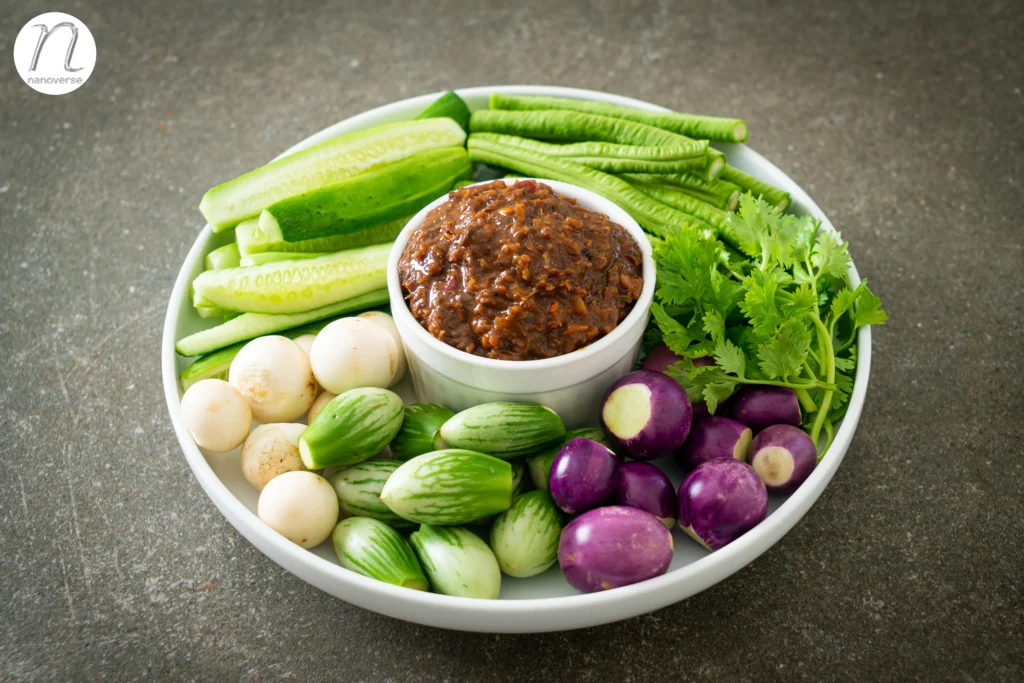
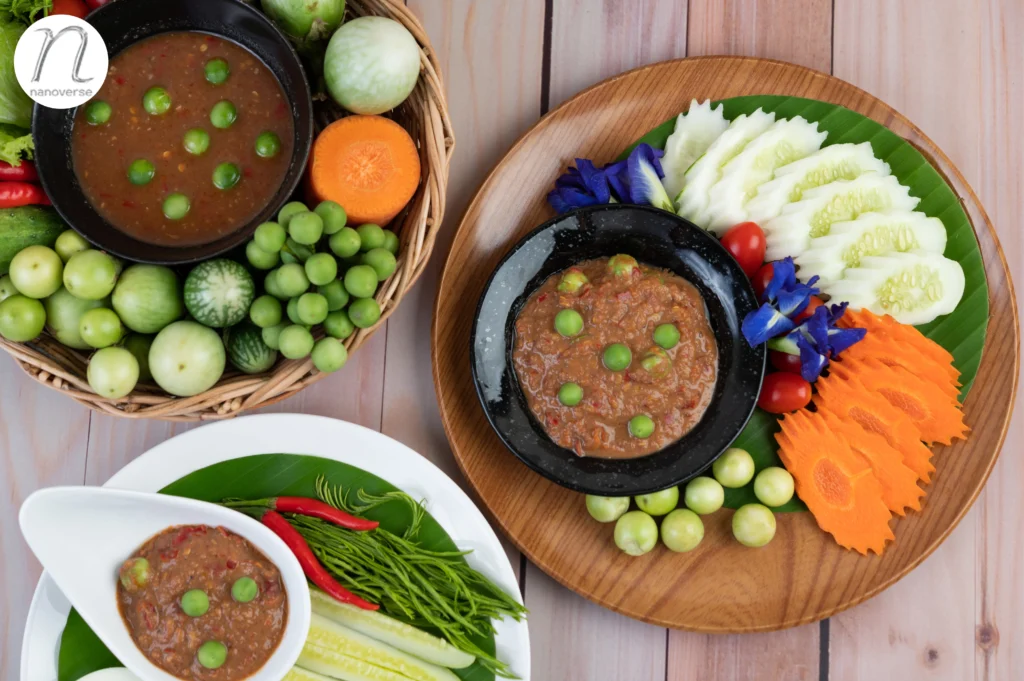
8. Steamed lime fish/small grilled fish, 155 Kcal. For those avoiding carbs or pasta, switch to fish instead for healthy protein and tangy lime flavor but beware of over seasoning causing digestive upset. Best enjoyed with fresh vegetables.
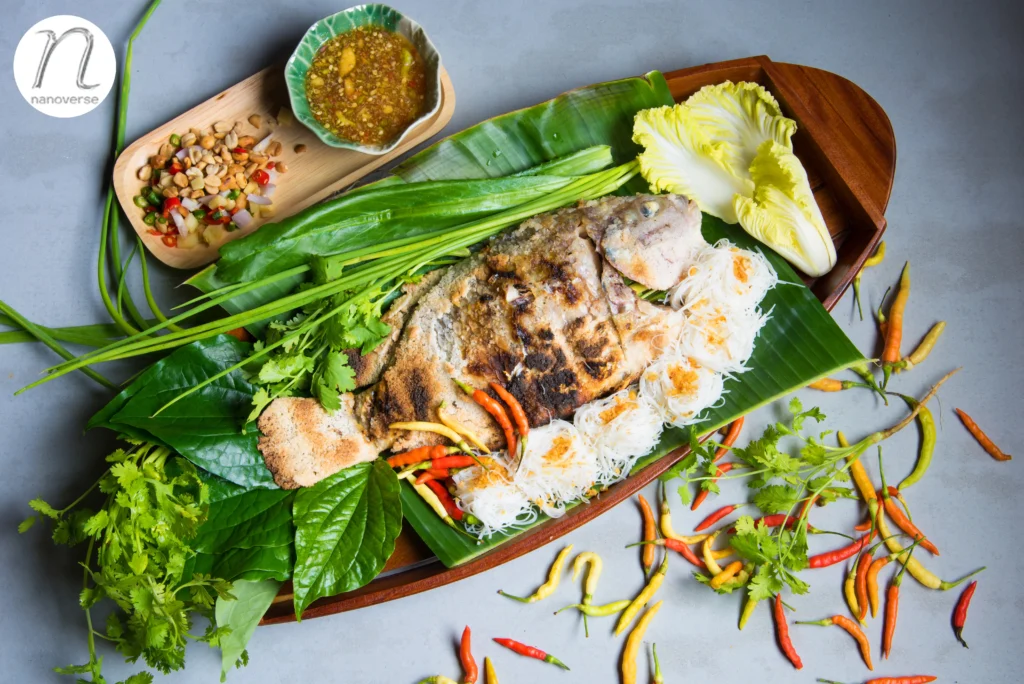
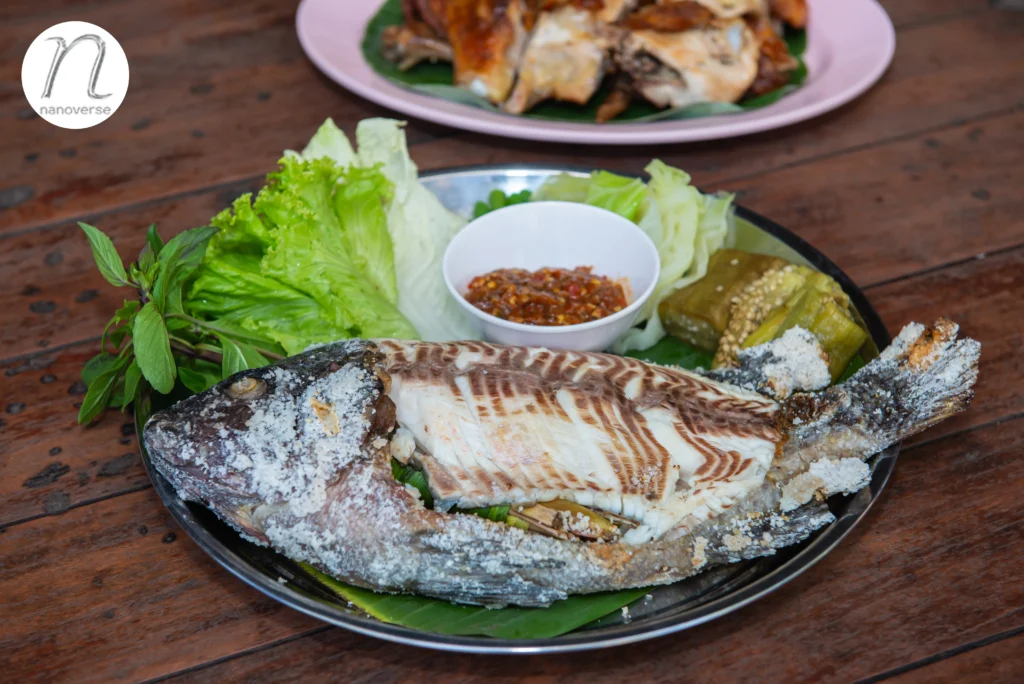
9. Fruit salad, 120 Kcal. Despite high sodium content possibly causing bloating, try switching to fruit salads which may help more than imagined. Different fruits like apples, pears, grapes, oranges, plums are high fiber or have high water content, helping with digestion and being low
sugar.
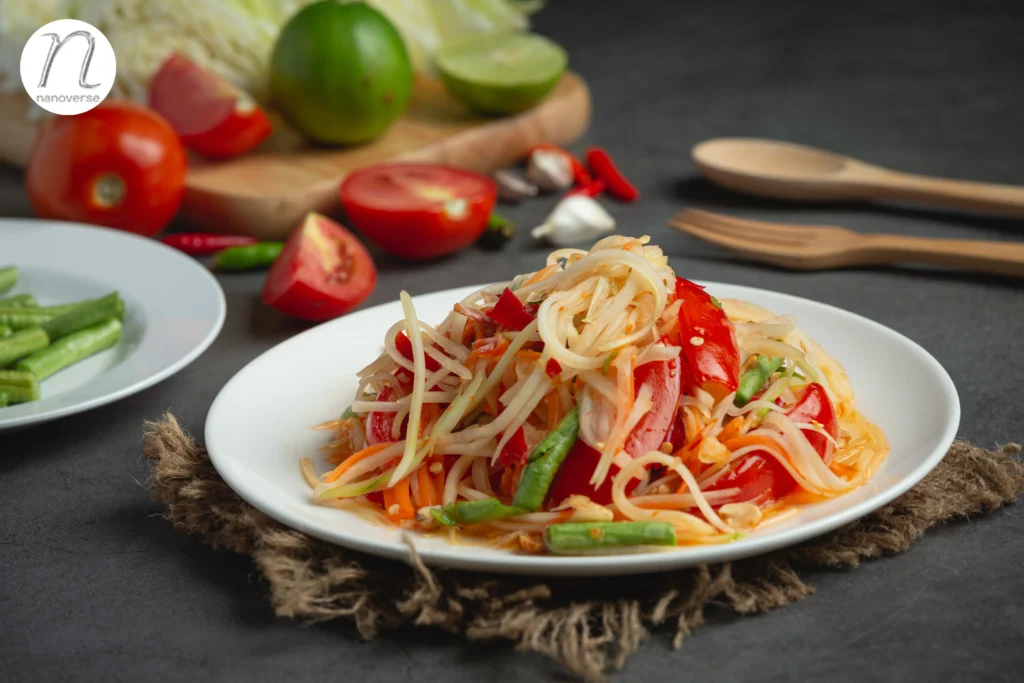
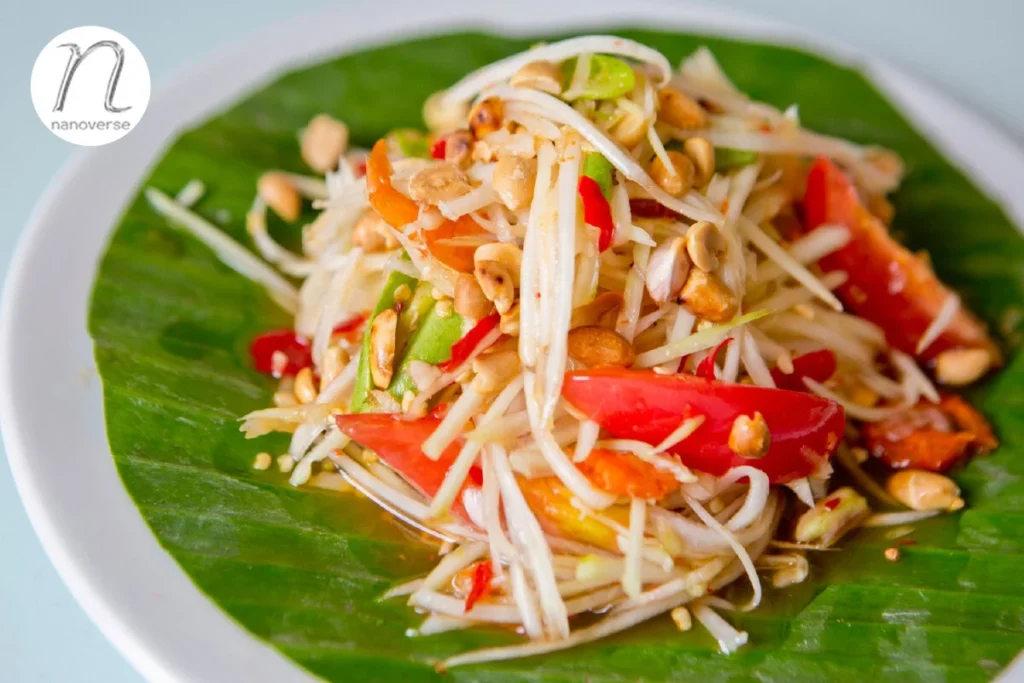
10. fresh spring roll, 175 Kcal. Although not authentically Thai since the original version came from Vietnam, modern spring rolls now have many fillings and dips to choose from. For the health conscious, switch to vegetable, mushroom, ground pork/shrimp fillings and replace sweet dressings with low fat salad dressing or seafood sauce to keep it tangy.

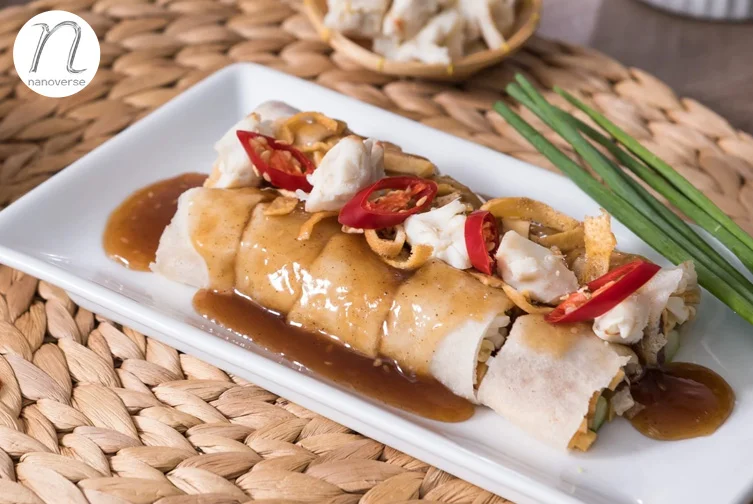
Ways to Treat Obesity
There are various methods:
1. Changing behaviors
– Adjust eating behaviors, eating balanced nutrition, choosing low fat meats, avoiding fatty and skin cuts, or substituting with fish, eggs, tofu, legumes, and grains instead. Vegetables should be eating a variety of colors. Choose low glycemic index fruits.
– Change sedentary lifestyles like watching TV and playing games to more active ones like walking, exercising, and outside activities with friends or family.
– Make exercising a regular daily habit.
2. Weight control using medication
Weight loss medications should be studied for pros/cons and risks. Heart and cardiovascular comorbidities should be concurrently managed like diabetes, hypertension, high cholesterol, smoking cessation. These medications should ideally be prescribed by experts who can best evaluate and make personalized recommendations, rather than arbitrarily self medicating which can negatively interact with other medications and exacerbate existing medical issues.
3. Bariatric surgery
– Stomach reduction surgery involves surgically reducing stomach capacity to a narrow banana shape, decreasing stomach hormones that stimulate appetite. This treats obesity by limiting stomach capacity.
– Gastric bypass surgery restructures the stomach anatomy by diverting nutrients past most of the stomach and proximal high absorption small intestine, into the mid or distal intestine thus reducing calorie absorption from food intake, hormonal modulation, and less nutrient absorption into the body.
With some behavioral adjustments, which can prove difficult but not impossible, everyone can avoid obesity. Start with easy techniques like reducing sweet, salty and high fat foods; increasing vegetables and fruits at meals, avoiding high sugar drinks, incorporating more physical activities, reducing or eliminating alcohol consumption altogether. This is the path to strong health and prevention of various diseases, establishing sustainable well-being.